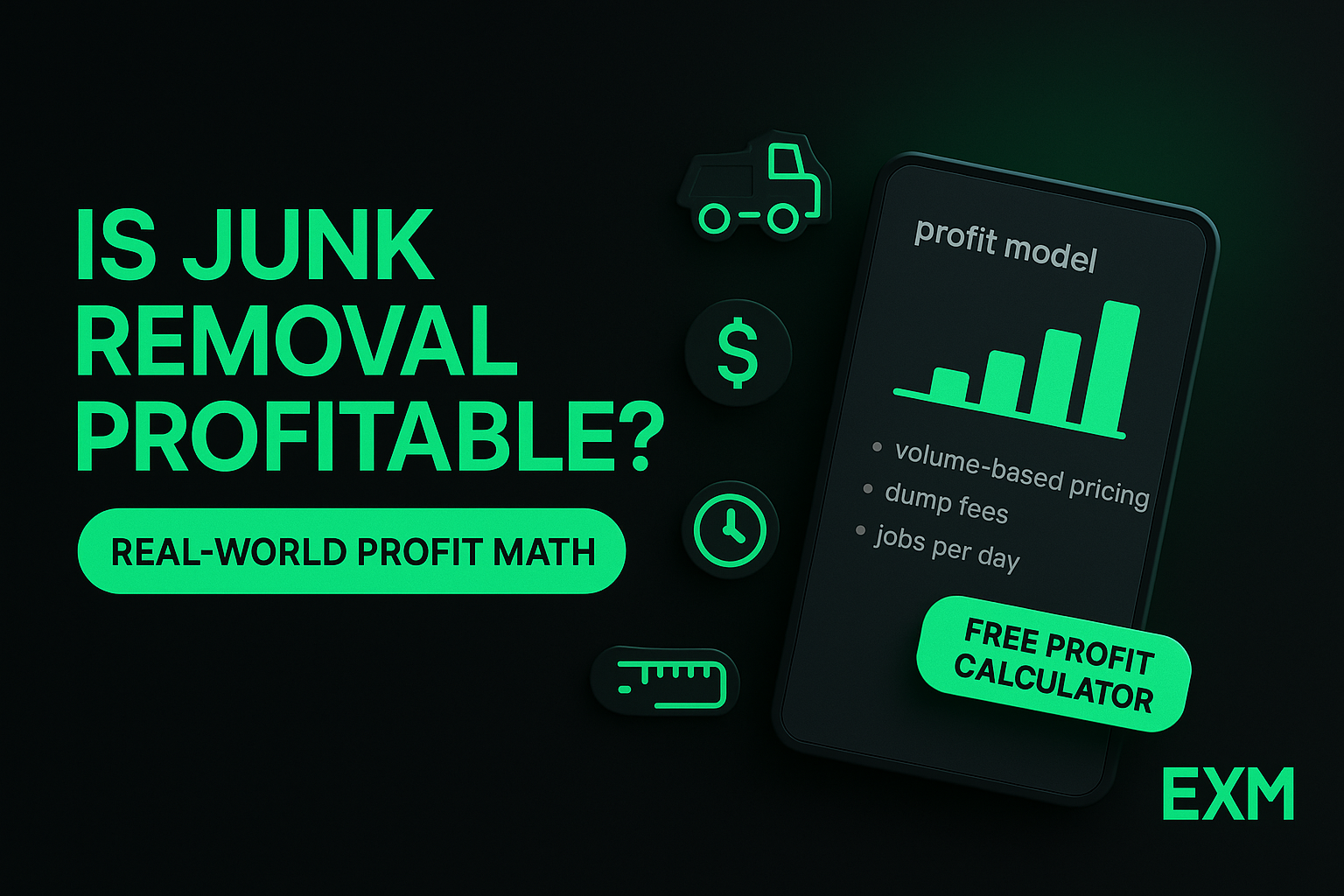Yes, if you price right.
Set a floor. Protect your time. Build tight routes.
the simple profit model
- revenue per job
- minus dump fees, fuel, helper pay, supplies
- minus a share of overhead (insurance, phone, storage)
- what is left is profit. track it by job and by day.
your price floor
- add: dump + fuel + labor + supplies + 20% buffer.
- set your minimum above that floor.
- charge for stairs, long walks, heavy items, and rush.
job mix matters
- single items = fast but small.
- half and full loads = better hourly profit.
- long drives kill margin. keep routes tight.
quick ways to raise margin
- bundle jobs by area.
- set two-hour windows, not open days.
- add curbside discounts to save time.
- upsell bagging, light demo, or cleanouts.
- resell safe items when allowed.
common mistakes
- underpricing to “win” the job.
- free long quotes across town.
- no deposit for big cleanouts.
- not checking dump rules first.
faqs (people also ask)
- how much profit per job?
it depends on load size and travel. full loads pay best per hour. - how many jobs a day is good?
3–6 tight jobs is a strong day for a small crew. - what are average dump fees?
fees vary by site and weight. call your local sites first. - can you make six figures?
yes, with solid pricing, tight routes, and steady reviews.
related reads: how much do junk removal companies make, owner salary, revenue streams, tools to work faster
sources
SBA — small business finances
SBA — startup costs
SBA — pricing your service
OSHA — safe lifting
EPA — landfill basics
cta: join ex-mattress — add your listing (28-day free trial)

